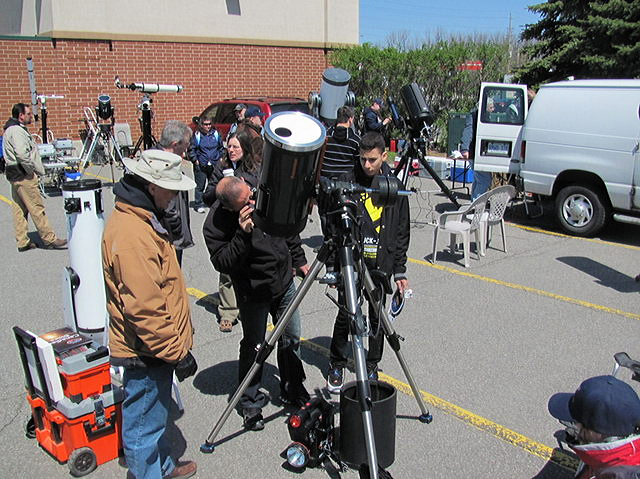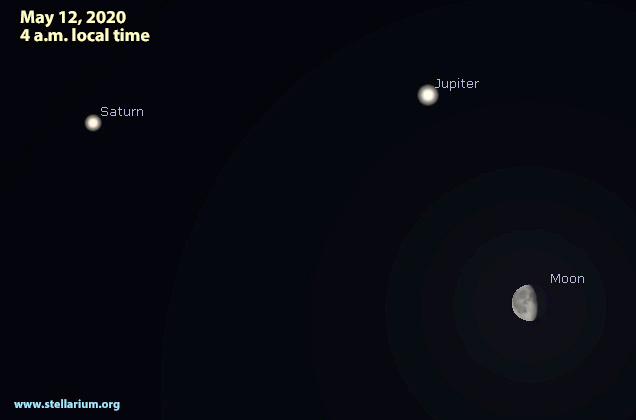A Virtual Astronomy Day
Since its creation in 1973, Astronomy Day has been a time to celebrate the oldest of the allied sciences by interacting with the public via display tables set up at museums, shopping malls, book stores and libraries by day along with a free public star party at night. No words can describe the joy of seeing people’s faces as they step up to the telescope for the first time and peer into the cosmos. The moon and planets are always the favourite to observe close up but seeing celestial objects thousands or millions of light-years away, leaves them speechless.

This act of presenting a personal tour of the night sky through the eyepiece of a telescope has been stopped in its tracks by COVID-19. Keeping safe by social distancing as well as staying home as much as possible is key to not contracting the virus. However, all is not lost. Thanks to social media and the recent popularity of Zoom webinars, the celebration of International Astronomy Day will look a little different this year.
On May 2, the Ottawa Centre along with the OAOG will be broadcasting live images of the Sun, Moon and Venus by day and a virtual star party at night (weather permitting) as well as other online presentations. A complete schedule of events and how to register can be found by clicking here and then press “go to virtual astronomy day”. As well, you are invited to join in on the Ottawa Centre monthly meeting the evening before on May 1 starting at 7:30 p.m. eastern (separate registration).
The only meteor shower this month is the Eta Aquarids. Your best chance to see some will be in the pre-dawn sky on May 5 and 6. Unfortunately, the shower produces only 30 meteors per hour and the southern hemisphere will be favoured to see more than here in the north but peaks the night before the full moon.
Jupiter, Saturn and Mars are seen before dawn and are up in the southeast by 3:30 a.m. local time. A digital moment occurs May 12 with the moon, Jupiter and Saturn form a nice grouping low in the southeast. Mars is increasing in brightness from magnitude 0.41 to zero by the end of the month as our distance is decreasing for the October 2 closest approach to earth.

For the past few months, Comet C/2019 Y4 (Atlas) had big expectations of being a bright comet in May. Unfortunately earlier in April, it started breaking apart as some comets do. The latest images are showing four large sections as well as many more smaller pieces and it looks like the show might be over before it began. But comets are unpredictable and might have one last outburst left in it but highly unlikely.
The planet Venus is still high in the western sky and sets before midnight. As the planet slides between the Earth and the Sun, it is now sporting a larger disk size and thinning illumination. At the beginning of May, it will be 24% illuminated in a telescope and down to only a thin 5% by the 21st. On that night Mercury will be a degree to the left and will make a great digital moment.
The Full Flower Moon occurs on May 7 with the new moon (lunation 1205 ) on May 22.
Until next month, clear skies everyone.
